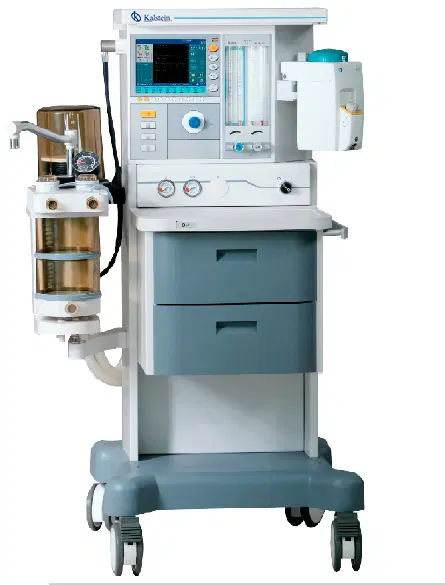There are 4 types of anesthesia, local, regional, sedation and general anesthesia. The latter is only administered in the case of major surgical interventions, which require a lot of time in the operating room.
One of the essential equipment for any hospital center is the anesthesia machine. These medical teams perform a very important job in medical centers and hospitals that have operating rooms. Its use is essential for some procedures that require supplying anesthetic gases to patients and monitoring their breathing throughout the process.
How has your evolution been over time?
Before the machines that we know today, the supply of anesthesia to patients was done through metal or glass cups in which the liquid (ethyl ether or chloroform) was deposited, or in air bags. Thus, from these containers the patients had to inhale the vapors, which rose by pumping or the use of sponges, gauze pads and the like. As such, anesthesia machines were not used in the medical field until the beginning of the 20th century, when it was possible to use a one-way valve system that, over time, was improved, offering more safety to patients. Thus, these essential equipment in operating rooms were developed to offer the advantages that we know today.
What are the main characteristics of these teams?
Anesthesia machines are high-precision devices that must guarantee the delivery of an exact amount of gas in order not to compromise the health of the patient. They are a product of innovation in mechanics, engineering and electronics, and must have these main characteristics:
- A source of O2 (dioxygen or oxygen gas) and a form of CO2 removal.
- A source of liquids or gases for anesthesia.
- An inhalation system.
How does an anesthesia machine work?
This type of machine is a high-precision device that is used to guarantee the precise supply of gas that does not cause health problems for the patient. These are responsible for producing and combining inhalation anesthetic agents and a fresh gas flow of medical gases. In order to induce and keep the patient under anesthesia. The system of an anesthesia machine includes several subsystems that are:
- Vaporization: vaporizers connected to the patient circuit that facilitate the dosage of drugs in vapor form.
- Ventilation: everything that allows joining and adjusting the amount of oxygen, air, anesthetic vapors and nitrous oxide. In addition to keeping the patient ventilated and safely and efficiently expelling anesthetic vapors, waste gases and CO2. It also covers the devices for measuring the volume, pressure and flow of each gas.
These teams have monitoring systems and analyzers. Also alarms and physiological record that allow proper control of anesthesia doses. On the other hand, it is capable of monitoring changes in vital signs, regardless of whether they are the result of surgery or anesthesia.
At Kalstein we are MANUFACTURERS and we put at your disposal innovative anesthesia machines at excellent PRICES. That is why we invite you to take a look at the Products menu. HERE


